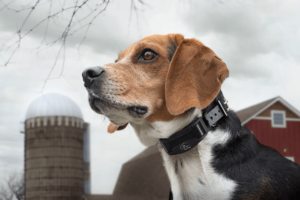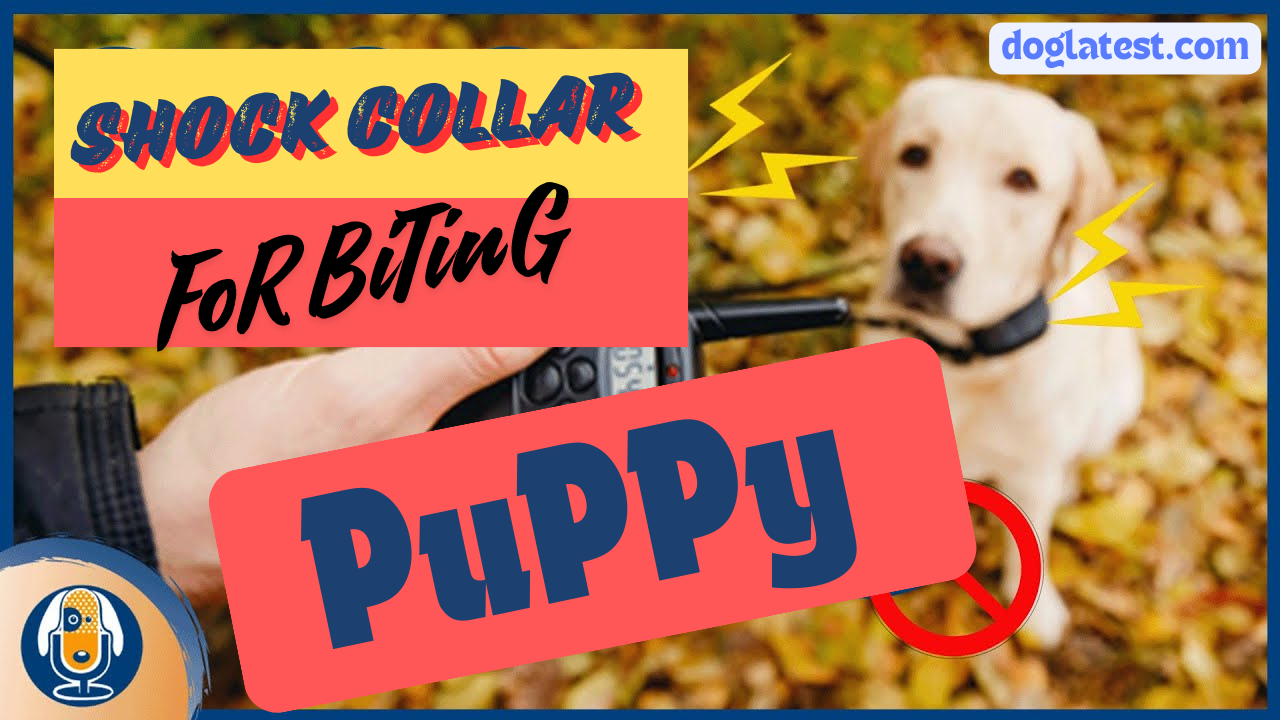Introduction
Puppy biting can be a frustrating challenge for new pet owners. While it’s a natural part of puppy development, unchecked biting can lead to behavioral issues as your dog grows. The shock collar is one tool that has garnered both support and controversy in the training world. This guide aims to provide a balanced, safe, and effective approach to using a shock collar for biting puppy to train.
Understanding Puppy Biting Behavior

Common Reasons Puppies Bite:
Puppies bite for a variety of reasons, primarily during play or as a way to explore their environment. They may also bite due to teething, curiosity, or as a form of communication. Understanding the root cause of your puppy’s biting is the first step in addressing the behavior.
The Developmental Stage of Biting:
Biting is a normal part of a puppy’s development. During their early months, puppies learn bite inhibition from their mother and littermates. If separated too early, they might not learn these crucial social skills, leading to more biting as they grow.
Why Consider a Shock Collar for Biting Puppy?
Benefits of Using a Shock Collar
When used correctly, shock collars can provide a quick and effective way to correct undesirable behaviors such as biting. They offer immediate feedback to the puppy, helping them understand which actions are not acceptable. This can be particularly useful when other methods have failed.
Misconceptions About Shock Collars
There’s a common misconception that shock collars are inhumane or harmful. However, modern shock collars are designed with safety features that minimize the risk of injury. When used responsibly, they can be a safe tool for training.
Types of Shock Collars:
Static Shock Collars:
These collars deliver a mild electric shock to the puppy when they engage in unwanted behavior. The shock is usually adjustable to ensure it’s not too harsh for the puppy.
Vibration Collars:
Vibration collars provide a non-painful buzz that startles the puppy, discouraging them from biting. They are often used for more sensitive dogs.
Spray Collars:
Spray collars release a burst of citronella or another unpleasant scent when the puppy bites. This method relies on the puppy’s dislike of the smell to deter biting.
Pros and Cons of Each Collar Type:
Each type of collar has its advantages and disadvantages. Static shock collars for biting puppy are typically the most effective but can be more controversial. Vibration and spray collars are less intrusive but may not work for all puppies.
Read More: What Size Prong Color for your Dog?
How to Choose the Right Shock Collar:
Factors to Consider:
When selecting a shock collar, consider your puppy’s size, temperament, and breed. A collar that’s too strong for a small breed could be harmful, while a gentle collar might not be effective for a larger, more stubborn puppy.
Safety Features to Look For:
Look for collars with adjustable settings, automatic shut-off features, and a good range. These features help ensure the collar can be used safely and effectively.
Preparing Your Puppy for Shock Collar Training:
Steps to Take Before Introducing the Collar:
Before using a shock collar, make sure your puppy is comfortable with wearing a regular collar. Gradually introduce the shock collar by letting them wear it without activation for a few days.
Gradual Introduction to the Collar:
Start with the least amount and see how your puppy responds. Increase the intensity gradually if necessary, always ensuring your puppy is not overly stressed.
Effective Training Techniques:
Consistency in Training:
Consistency is key in any training regimen. Use the collar every time the unwanted behavior occurs to help your puppy make the connection between the behavior and the consequence.
Positive Reinforcement Alongside the Collar:
Use of the shock collar should be combined with constructive criticism. Reward your puppy with treats and praise when they display good behavior to reinforce positive actions.
Monitoring and Adjusting Collar Settings:
Regularly check the collar’s settings and your puppy’s response. Adjust the intensity as needed to ensure it’s effective without causing undue stress.
Common Mistakes to Avoid:
Overusing the Collar:
Avoid relying solely on the shock collar. Overuse can lead to fear and anxiety. It’s important to combine the collar with other training methods.
Inconsistent Training:
Inconsistent use of the collar can confuse your puppy. Make sure all family members are on the same page and use the collar consistently.
Not Pairing with Positive Reinforcement:
Failing to use positive reinforcement alongside the shock collar can hinder progress. Positive reinforcement helps your puppy understand what behaviors are desired.
Signs of Stress in Puppies:
Recognizing Signs of Discomfort or Stress:
It’s crucial to recognize signs of stress in your puppy, such as excessive panting, drooling, or cowering. If your puppy shows these signs, it may be necessary to adjust your training approach.
How to Respond if Your Puppy Shows Stress Signs:
If your puppy appears stressed, take a break from training and provide comfort. Reevaluate your training methods and consider less intrusive alternatives.
Read More: How to Stop a Dog from Biting?
Alternatives to Shock Collars:
Positive Reinforcement Techniques:
Treats and praise—positive reinforcement—are very successful training techniques. It encourages good behavior without the need for corrections.
Clicker Training:
Clicker training uses a click sound to mark desired behaviors, followed by a reward. This method helps puppies understand what actions are positive.
Professional Training Help:
If you’re struggling with training, seeking help from a professional trainer can provide personalized guidance and support.
Case Studies: Success Stories:
Real-Life Examples of Successful Training With Shock Collars:
Many pet owners have successfully used shock collars to train their puppies. One such example is a Labrador puppy that stopped biting after consistent shock collar training paired with positive reinforcement.
Lessons Learned From These Stories:
These success stories highlight the importance of consistency, proper use of the collar, and the combination of positive reinforcement.
Expert Opinions on Shock Collar for Biting Puppy Training:
Veterinarian Perspectives:
Many veterinarians advocate for the responsible use of shock collars, emphasizing the importance of proper training and the well-being of the puppy.
Professional Dog Trainer Insights:
Professional trainers often recommend shock collars as a last resort, preferring positive reinforcement methods but recognizing the effectiveness of shock collars in certain situations.
Ethical Considerations:
Balancing Training Effectiveness With Animal Welfare:
It’s essential to balance the effectiveness of shock collar training with the ethical treatment of your puppy. Always prioritize your puppy’s well-being and avoid causing unnecessary harm.
Humane Use of Shock Collar for Biting Puppy:
Use the collar humanely, ensuring the settings are appropriate and pairing it with positive reinforcement. Avoid using the collar as a punishment tool.
Maintenance and Care of Shock Collars:
Regular Checks and Maintenance:
Regularly check the collar for any signs of wear and tear. Replace the batteries and clean the collar to ensure it remains effective and safe.
Ensuring the Collar Remains Safe and Effective:
Proper maintenance ensures the collar functions correctly and continues to be a safe training tool for your puppy.
Conclusion:
Training a shock collar for biting puppy can be challenging, but with the right tools and techniques, it’s achievable. Shock collars, when used responsibly, can be an effective part of your training arsenal. Remember to combine the collar with positive reinforcement, stay consistent, and prioritize your puppy’s well-being. By following this guide, you can help your puppy develop into a well-behaved and happy companion.
FAQs:
Are shock collars safe for all puppies?
Not all puppies are suitable candidates for shock collar training. It’s best to consult with a veterinarian or professional trainer to determine if it’s appropriate for your specific puppy.
How long should I use a shock collar for biting puppy?
The duration of shock collar use varies. Some puppies may only need it for a short period, while others may require longer use. Monitor your puppy’s progress and adjust as needed.
Can shock collars be used for other behaviors?
Yes, shock collars can be used to address various behaviors, such as excessive barking or jumping. However, always follow a structured training plan.
What are the best practices for using a shock collar?
Best practices include starting with the lowest setting, being consistent, combining with positive reinforcement, and regularly monitoring your puppy’s response.
How can I tell if the shock collar for biting puppy is working?
Signs that the collar is working include a reduction in the unwanted behavior and your puppy’s ability to follow commands without showing stress or fear.

